#alau art
Explore tagged Tumblr posts
Text

My first few chapters have a lot of Childhood Flashbacks, so, here's a rainbow of children in preparation~
#alau#alau art#kids#children#marinette#kagami#alya#chloe#adrien#nino#felix#my art#miraculous ladybug#au
3K notes
·
View notes
Text
spece adventure
youtube
#alau#alau art#kids#children#marinette#kagami#alya#chloe#adrien#nino#felix#my art#miraculous ladybug #youtube #youtuber
#Youtube#alau#alau art#kids#children#marinette#kagami#alya#chloe#adrien#nino#felix#my art#miraculous ladybug#youtube#youtuber
0 notes
Text




Zuzu (and friends)'s Bug-ventures!
This is the first in a series of posts with photos taken by my friend @cosmo-does-art! They worked in a nature reserve over the summer in the Southeastern US and sent me some stunning photos. I was thrilled to see these and I'm even more thrilled to share them, because there are SO MANY bugs in this set that I'll probably never see IRL. Anyway... on to the ID attempts!
It's a flat-backed millipede, possibly Sigmoria aberrans or Sigmoria latior
Eastern eyed click beetle (Alaus oculatus). I've seen other click beetles before but never the famous one with cartoon eyes. They make a noise like those little metal hair barrettes. You know the ones?
A larger elm leaf beetle (Monocesta coryli). Extremely cute!!!! I think I've seen the small variety of elm leaf beetle before.
An Eastern buck moth caterpillar (Hemileuca maia). This is might be most venomous bug I've ever posted a picture of?
I have around 60 photos from Cosmo, so I'm going to spread them out between some of my own posts for a while. Anyway, thank you SO MUCH Cosmo for sharing these with me so I can identify them!
3 notes
·
View notes
Photo

anthony fineran (b 1981), caina alau, 2021
1 note
·
View note
Text
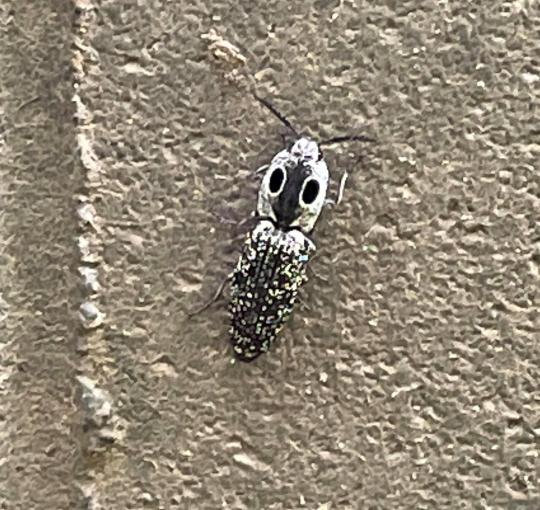
Eastern eyed click beetle; Alaus oculatus
This bro was massive; the length of my thumb at least. Had no idea there were click beetles that could get that big.
Click beetles have an interesting ability; they have an organ on their underside that can be loaded to build up the energy needed to launch them into the air to right themselves if they end up their backs (and it frightens predators, too!). They get their name from the distinctive "click" noise the organ makes when it unlatches.
-----------------------
Check out my art blog: bugbeast.me - I just released a card game, and you can play it with a normal deck of cards!
#bugbeast#entemology#bug facts#bugs#insecta#insects#arthropoda#arthropods#bugblr#photography#nature#nature photography#animals#cute animals#cute bugs#cool bugs#beetles#click beetle#eastern eyed click beetle#elateridae
3 notes
·
View notes
Text
Jebakan Tersembunyi dalam Mengambil Keputusan
“If decision-making is a science, then judgment is an art”, - Advance Leadership Initiative Harvard University.
Hari ini saya ingin sedikit mengulas sedikit materi yang ada saya pelajari di mata kuliah Strategic Decision Making & Negotiation di kampus. Menurut saya materi ini menarik untuk di share di blog ini mengingat materi ini bisa menjadi salah satu sumber kesalahan ketika kita mengambil keputusan, khususnya membeli barang. Judulnya The Hidden Traps in Decision Making dari salah satu artikel Harvard Business Review. Saya coba sederhanakan bahasanya biar lebih mudah dipahami sama temen-temen minimalis. Have a nice read.
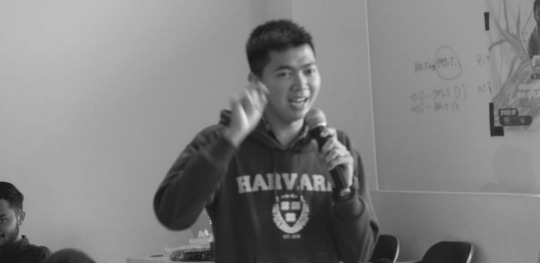
Sebenarnya pengantarnya sederhana kenapa kita harus belajar ini, sadar ga sih kadang dalam membuat keputusan, terkadang kita suka keliru. Ini bisa terjadi karena banyak faktor dan yang paling krusial adalah ketika kita membuat keputusan tanpa data. Akui saja kadang kita tiba-tiba membeli barang, tapi kita tidak mengetahui manfaat barang tersebut. Asal diskon langsung check out, atau kadang kita menyesal setelah membeli suatu barang setelah kita membelinya dan mengetahui ada yang harganya lebih murah. Nah ternyata kesalahan kesalahan kaya gini ada ilmu nya dan itu semua dipelajari di tempat saya studi. Contoh nih yang saya rasakan beberapa tahun lalu dan kadang kocak kalau mengingat momen itu.
Saya bersama seorang teman dari Bogor datang ke salah satu pusat elektonik yang ada di Bandung. Niatnya sih saya mau nganter temen yang saat itu mau membeli peralatan untuk memenuhi kebutuhan PKL-nya di Lembang. Eh ternyata pas kesana. Teman saya tidak jadi membeli apapun dan malah saya tiba-tiba membeli laptop baru. Padahal laptop lama masih ada. Terus pas sudah di jalan baru mikir kenapa harus beli laptop ini ya. Padahal sebenernya laptop yang ada di kosan pun masih bagus. Emang sih beda brand, tapi rasa-rasanya laptop yang dulu masih sangat-sangat bagus.
Contoh kocak diatas dinamakan The Sunk-Cost Trap. Biar temen-temen minimalis tidak terjebak dengan jebakan-jebakan tersembunyi ini. Mari kita bahas satu per satu.
The Anchoring Trap
Contoh nya ketika kita ditanya apakah populasi turki lebih besar dari 35 juta orang? terus pertanyaan kira kira berapa jumlah aslinya sesuai prediksi terbaik kita? Pertanyaan nomor satu biasanya mempengaruhi pertanyaan kedua. Ini kondisinya kita engga tau berapa jumlah asli populasi Turki. Terus karena pertanyaan kedua nanya berapa jumlah aslinya di saat mindset kita sudah terpengaruh kalau turki itu lebih dari 35 juta. Terus kita so so an jawab beberapa juta diatas 35 juta. Ternyata jawaban nya bahkan kurang dari 35 juta heu. Sederhananya Anchoring Trap ini kaya semacam penggiringan opini agar dari beberapa pertanyaan sebelumnya.
The Status-Quo Trap
Sederhana nya ini seperti “biasanya”. Kita tidak mengambil keputusan karena “biasanya” orang juga tidak mengambil keputusan. Contoh nya adalah ketika kita main saham. “biasanya” sih orang orang tidak membeli saham di hari D, terus kita pun akhirnya memilih alternative aman untuk ngikutin orang-orang. Eh ternyata langkah itu salah. Nah disitu sudah terjadi yang namanya Status-Quo Trap. Di dalam artikel disebutin kalau kita harus memaksa diri kita untuk memilih. Jangan kebawa-bawa sama orang heu.
The Sunk-Cost Trap
Kalau di google sih arti ari Sunk-Cost itu yakni hangus biaya. Tapi apa ya arti sesungguhnya. Jadi kalau trap yang ini sering kali kita secara engga sadar memutuskan untuk mengerjakan sesuatu tanpa kita mengetahui kenapa sih harus ngelakuin ini. Istilah sederhananya mah ngalir aja. Contohnya adalah kasus yang tadi di awal.
The Confirming-Evidence Trap
Kalau ini sederhananya adalah “mencari pembenaran”. Contoh di artikel sih tentang ketika kita jadi CEO perusahaan yang mau ngebatalin ekspansi perusahaan yang udah direncanain. Sebelum tau nya, kita udah takut kalau bulan depan dollar lagi gak bagus dan ngebuat biaya produksi lebih mahal. Terus nanya ke bagian yang lain dan katanya engga ko bagus. Masih engga puas terus aja nanya nanya ke orang yang setuju dan bilang kalau keputusan yang akan kita ambil itu bener.
The Framing Trap
kalau ini katanya kesalahan dalam membuat keputusan yang dipengaruhi oleh pengalaman dramatis atau traumatis. Contoh nya ketika kita mau menyatakan perasaan kita kepada seorang perempuan. Tetiba di saat itu kita mikir mikir lagi untuk menyatakan perasaan itu karena pernah punya pengalaman trauma ditolak. Padahal bisa jadi ditolak lagi sih haha. Engga, maksudnya padahal bisa jadi diterima dan diminta langsung datang ke orang tuanya. Kan mantap tuh. Sebelum memutuskan kita sering membuat framing sendiri dulu heu.
The Estimating and Forecasting Traps
Contohnya kemungkinan harga oli lebih kecil daripada 15 USD per barel dengan kemungkinan 40%. Nah darimana itu kita ngomong 40%. tiba-tiba aja ada gitu. Biasanya kadang manager suka bilang gitu kalau di artikel. Nah disini kita sebagai manager pun ga bisa ngasih tau bener ga sih kemungkinan 40% itu. Tapi katanya ada tiga jebakan yang paling sering kita lakukan ketika memperkirakan dan juga forecasting:
I. The Overconfidence Trap
Ini contohnya yang tadi, ketika kita terlalu pede mengambil suatu keputusan tanpa mempertimbangkan baik-baik.
II. The Prudence Trap
Sering ketika menghadapi taruhan tinggi, kita buat menyesuaikan estimasi kita dengan sesuatu yang namanya “just to be on the safe side”. Contoh di artikel katanya beberapa taun lalu ada satu dari tiga perusahaan pembuat mobil di US. Mereka memutuskan berapa banyak model yang harus di produksi dalam mengantisipasi musim penjualan tersibuk mereka. Mengetahui tujuan estimasi nya, setiap department memutuskan untuk memiringkan forecasting nya (buat banyak mobil). Eh ternyata setelah banyak produksi, mobil yang dibuat terlalu melebihi permintaan dan butuh enam bulan untuk menjual sisanya dan akhirnya menggunakan strategi promosi deh. Waduh kasian juga ya.
III. The recallability Trap
Katanya pengalaman dramatis atau traumatis berpengaruh disini. ketika kita berangkat kerja, kita bakal nge estimasiin bakal macet karena kita pernah ngalamin itu sebelumnya atau kita akan estimasi meninggal karena kanker karena temen deket kita meninggal karena itu.
Nah kan sadar ga sadar semua itu pernah terjadi di diri kita dan ternyata ada istilah-istilahnya. Sebenernya ada juga sih cara cara ngelawan nya gimana. Selebihnya bisa dibaca di artikelnya. Untuk tulisan kali ini, saya coba perkenalkan istilahnya terlebih dahulu. Semoga di post selanjutnya, kita bisa membahas solusi untuk jebakan-jebakan ini. Semoga bermanfaat. Salam minimalis
@ryanfryzky | menjadiminimalis.com
6 notes
·
View notes
Photo



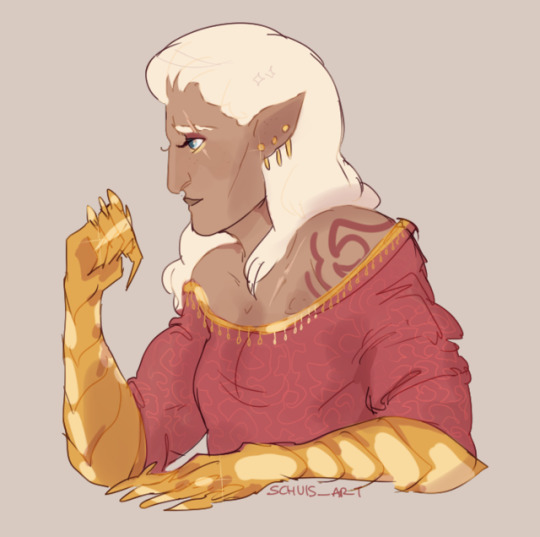

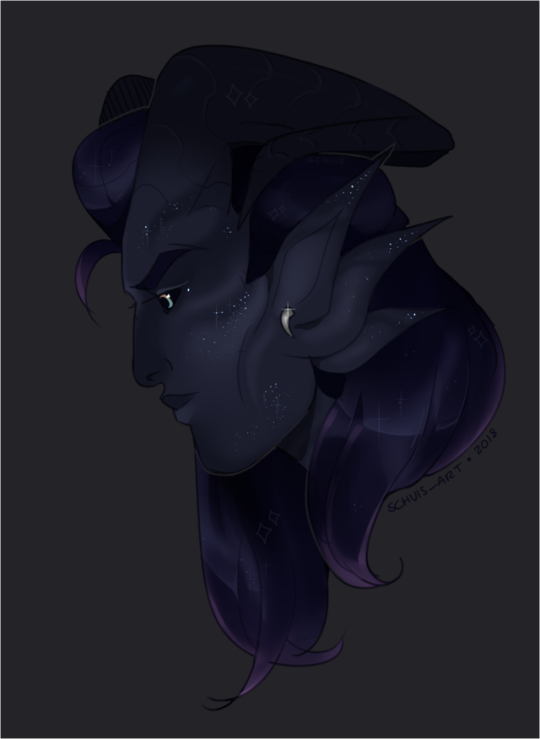
Last post for a bit now, OTL. Just some character sketches featuring: Unnamed Demon, Yasir, Unnamed Demon, Alaus, Andras & Sotiris.
Art, Character © @schuis - 2018
( DeviantArt - Twitter - Commissions - Buy Me A Coffee )
5 notes
·
View notes
Text
Galerna Alau atunero para Albacora por Armon Gijon.
Galerna Alau atunero para Albacora por Armon Gijon.
” Atunero Galerna Lau” llego al puerto de Vigo para finalizarlo y darle los últimos retoques y una vez finalizado pertrechar con las artes de pesca y ponerlo a punto para su propietario la casa armadora de Albacora es uno de los mejores atuneros de última tecnología construido en los astilleros de Armón Gijon shipyard.

Tiene unas dimensiones de 95 metros de eslora por 15 de manga y un arqueo…
View On WordPress
0 notes
Text
Lithuania – today the most westerly of the Baltic trio that includes Estonia and Latvia, but in the past the capital of the medieval Grand Duchy of Lithuania, which united with Poland in 1569, until it was incorporated into Russia in the late 18th century. Medieval Lithuania was for a time one of the largest states of Central Europe, extending southeast from today’s Lithuania, controlling what are now parts of Poland, Russia, Belarus and Ukraine, and played a decisive part in defeating Mongol invaders in the 15th Century.
Gedimas Castle Tower, 15th Century.
Independent in 1918 after the collapse of the Russian empire, occupied by the Soviet Union in 1940, then by Germany until the Soviets returned and stayed between 1944 and 1991, Lithuania is independent again. Vilnius missed out on independence in 1918 however, as it was claimed by the also newly re-independent Poland. After back and forth between Lithuanian, Polish and Soviet forces it was annexed by Poland in 1922, remaining under Polish control until the Soviets occupied Poland in 1939. The Lithuanian government was able to regain control of the city for a brief time until 1940 in exchange for Soviet military basing in the country.
Apart from some medieval remnants, Vilnius has a mix of Polish renaissance and baroque architecture, a lot of functional 19th century Russian buildings that give a typical Eastern European feel, balanced out by Baltic German buildings and of course postwar Communist brutalist concrete.
There is a cathedral center next to the remnants of the original fortified city, highlighted by the 15th-century hilltop Gediminas Castle Tower. The Kalnu park just east of the tower is good for a stroll overlooking the Neris River.
Grand Duke Gedimas Statue
Like many former Soviet Bloc countries, Lithuania experienced the heavy hand of Soviet totalitarian oppression, and have converted the former KGB building into the Genocide Museum, at Auku 2A (immediately south of the City Courthouse at Gedimino 40). It’s a grim experience, but then so was being stuck behind the Iron Curtain.
Rather like the House of Terror in Budapest and the KGB Building in Riga, personnel record photos of the KGB staff – both Russian and local hires – were located post-independence and are displayed. I would not want to be interrogated by some of the characters who worked here. Lithuania had a partisan resistance movement based in its extensive forests, that ran from 1944 to about 1953 and which was eventually crushed, and so there was armed rebellion for some time. The museum also explains the role of Lithuanians in supporting the Nazi occupation and genocide between 1940 and 1944.
Of course, any fascist police state needs its finance department. You can just imagine the budget discussions and complaints from the Interrogation Division about how the bean counters are always getting in the way.
And because, whether it is GE, McKinsey or the KGB, people always come first, so your supportive HR team is here to help. These guys look like the more cooperative type.
What surprised me was that inmates at the much feared Vorkuta prison camp – part of the Gulag Archipelago described by Solzhenitsyn where many Lithuanians were deported to – got to send Christmas cards back home. The Northern Lights and the reindeer are a nice touch and the camps by 1955 might have been relatively liberal compared to the 1930s, but still quite rough and likely to wreck your health assuming you were ever able to leave. Lithuania experienced two major waves of deportations to the Soviet Union, in 1940 and then post-World War Two.
If this isn’t enough to absorb, you are reminded that Vilnius was one of the largest Eastern European Jewish communities (around 55,000) before WW2, with Lithuania having a significant Jewish population. Reminders of the Vilnius ghetto are placed at some of it’s entrances.
The Holocaust Exposition on Pamėnkalnio 12 is worth visiting, which records much of the Jewish community’s pre-war life as well as documentation of the genocide carried out once the area was occupied in 1941.
After that, a walk in the snow is a good idea. Some other places worth a look include:
Lithuanian Art Museum, Didžioji 4 – mainly regional art and a neat 19th century photographic exhibition.
National Museum, Arsenalo 1.
Palace of the Grand Dukes of Lithuania, Katedros 4.
Logistics. I stayed at the Shakespeare B&B on Bernadinu Street, close to the city center which was a comfortable and low-key place. The main culinary range is traditional Lithuanian through to more modern Baltic/Scandinavian-style places, along with traditional Eastern bloc favorites such as Georgian. A few recommendations are:
Etno Dvaras, Pilies 16 – a local chain that hits all the high points for Lithuanian cooking. Not elaborate but a good menu and reasonable prices.
Busi Trecias, Totoriu 18 – traditional pub restaurant that brews its own beer.
Lokys, Stikliu 10 – higher end new Lithuanian.
Aline Leiciai, Stikliu 4, – another casual local place.
A few places that are good for trying Lithuanian microbrews:
Alaus Biblioteka, Traku 4 – good range of taps and bottles and a lighter space. Staff are very helpful on the local recommendations. As ever in the Baltics, there is interesting craft beer with neat labels.
Bambalyne, Stikliu 7 – basement retreat with a good bottle selection.
The airport is a 10-minute cab or uber ride; and the railway station is about a 15-minute walk, located on the south side of the old town. You can buy your tickets on the train, so don’t need to mess around at ticket offices; just get on board.
Vilnius, Wilno, Vilna, Vilne Lithuania - today the most westerly of the Baltic trio that includes Estonia and Latvia, but in the past the capital of the medieval Grand Duchy of Lithuania, which united with Poland in 1569, until it was incorporated into Russia in the late 18th century.
0 notes
Text

Alya is definitely the most fun to draw so far
#she’s my mega angel fanatic that makes everyone a little tired after talking to her (/pos)#alau#angelic layer au#alau art#my art#al:Alya#al:Rena rouge
2K notes
·
View notes
Text
Attendance at GSMA Mobile World Congress Shanghai 2018 Tops 60,000 Visitors
HONG KONG — The GSMA today reported that more than 60,000 unique visitors1 from 112 countries and territories attended the 2018 GSMA Mobile World Congress Shanghai, held 27-29 June in Shanghai. The three-day event attracted executives from the largest and most influential organisations across the mobile ecosystem, as well from companies in a range of vertical industry sectors. In addition to this business-to-business audience, nearly 8,800 consumers from the greater Shanghai metropolitan area attended the Migu Health and Fitness Festival, which was held in the Mobile World Congress Shanghai halls at the Shanghai New International Exhibition Centre (SNIEC).
“We are extremely pleased with the results for the 2018 Mobile World Congress Shanghai, particularly the very strong growth in our business-to-business segment,” said John Hoffman, CEO, GSMA Ltd. “Attendees were able to truly “Discover a Better Future”, from the thought leadership conference to the exhibition and everywhere in between. With more than two-thirds of the world’s population as subscribers, mobile is revolutionising industries and improving our everyday lives, creating exciting new opportunities while providing lifelines of hope and reducing inequality. Mobile truly is connecting everyone and everything to a better future.”
Covering seven halls at the SNIEC, the 2018 Mobile World Congress Shanghai hosted 550 exhibitors, nearly half of which come from outside of China. The conference programme attracted nearly 4,000 attendees, with more than 55 per cent of delegates holding senior-level positions, including nearly 320 CEOs. Nearly 830 international media and industry analysts attended Mobile World Congress Shanghai to report on the many industry developments highlighted at the show.
Mobile World Congress Shanghai officially opened on Wednesday, 27 June with a ceremony attended by representatives from the International Telecommunication Union, the China Ministry of Industry and Information Technology, the Cyberspace Administration of China, Shanghai local government authorities and the Pudong New District Municipal Government, among other distinguished guests.
Industry Leaders Headline Conference Programme
Held over three days, the Mobile World Congress Shanghai conference programme featured keynotes from leaders of organisations including AngelHack, AsiaInfo Technologies, AT&T Business, Benefit Vantage, Bharti Enterprises, China Mobile, China Telecom, Crown Infrastructure Partners, Dentsu Aegis Network China, Ericsson, FREE MEE, Huawei, Jazz, LightBee, SenseTime, Shell Retail China and Viacom International Media Networks.
The conference addressed a range of topics, from 5G and artificial intelligence (AI) to the Fourth Industrial Revolution and immersive content and media, among others. A new element this year was the Leaders Stage, which explored wide-ranging trends that are impacting citizens’ everyday lives, including digital society, blockchain, cyber security, big data and mobile payment technologies. Alongside the conference, Mobile World Congress Shanghai included many partner programmes and workshops, as well as GSMA forums and seminars.
The Women4Tech Programme made its Shanghai debut, following its success at Mobile World Congress events in Barcelona and in San Francisco. The centerpiece of the programme was the Women4Tech Summit, which was held on Thursday, 28 June on the Leaders Stage, and attendees also had the opportunity to participate in speed coaching and networking sessions.
Showcasing the Latest in Mobile Innovation
The Mobile World Congress Shanghai exhibition showcased hundreds of companies from across the mobile ecosystem as well as adjacent industry sectors. Notable participating companies included AsiaInfo Technologies, BYTON, China Mobile, China Telecom, China Transport Telecommunication Information Group, China Unicom, Datang, Dell, Ericsson, Gemalto, HTC Vive, Huawei, Intel, Lenovo, Nokia, OnStar, PwC, Qualcomm, Samsung LSI, Visa, vivo and Volkswagen, among others. New for 2018, the NEXTech Hall put the spotlight on cutting-edge technologies such as virtual reality and augmented reality, AI and robotics, and was also home to Connected China and the Device City, while the AutoTech Zone and the IoT Zone featured in other industry halls.
The GSMA Innovation City was again a highly popular destination on the exhibition floor, highlighting how “intelligent connectivity” – leveraging 5G, the Internet of Things, AI and big data – can deliver a smarter and more sustainable future. Visitors experienced these technologies and others through a range of hands-on demonstrations that illustrated the positive impact of mobile on virtually every aspect of life, in sectors such as transport, health, agriculture, industry, home and retail. Leading brands participating in the City were BICS, Continental, Huawei, Internet Finance Authentication Alliance (IFAA), Migu, myFC, PwC, Ratta, SI-TECH and Zhejiang Panshi Information Technology.
In its third year in Shanghai, the 4 Years From Now (4YFN) startup event hosted more than 130 international and local startups, including large delegations from South Korea, Spain and others. In addition to the exhibition, the 2018 4YFN programme delivered unique connecting initiatives, including inspirational talks, technical workshops, networking activities, community outreach and the 4YFN Summit and 4YFN Awards.
Co-Located and Partner Events Broaden Experiences for Attendees
Mobile World Congress Shanghai was held concurrently with a number of co-located and partner events. Attracting nearly 8,800 consumer attendees, the Migu Health and Fitness Festival highlighted the intersection of sports, entertainment and technology. The Festival offered a wide variety of exciting activities such as an e-sports competition, a music festival, a running competition, a sports exhibition, a sports technology summit, a sports-focused VR/AR Summit and others. Other events included Display China 2018, droidcon Shanghai 2018, the International Smart City Expo – Shanghai Pudong, the Shanghai International Service Robot Technology and Application Show 2018, and the S-Nova Art & Technology Award.
Mobile World Congress Shanghai: A Carbon Neutral Event
In November 2017, Mobile World Congress Shanghai was again officially certified by the British Standards Institution as carbon neutral under the international PAS 2060 standard, reinforcing its position as the largest carbon neutral exhibition and conference in Asia. For 2018, the GSMA focused on further reducing the environmental impact and carbon footprint of the event, offsetting any outstanding emissions as necessary. The GSMA is continuing to pursue certification of its offices and events, including Mobile World Congress Shanghai, for 2018.
Mobile World Congress Shanghai Partners
Partners for Mobile World Congress Shanghai 2018 included China Mobile (Diamond Event Partner) and Huawei (Platinum Event Partner). Media partners included CNN International and Mobile World Live (Global Media Partners); BBC World News and BBC.com, Bloomberg Businessweek, CCTV2 and LinkedIn (Official Media Partners); and C114, People’s Posts and Telecommunications News, and Tencent News (Strategic Media Partners).
“On behalf of the GSMA, I would like to thank all of our attendees, exhibitors, sponsors and partners who came together to make the 2018 edition of the Mobile World Congress Shanghai such a success,” added Hoffman. “We also extend our gratitude to the government of China and the city of Shanghai and we look forward to returning to Shanghai next year.”
For news coverage and video highlights from Mobile World Congress Shanghai, please visit Mobile World Live at www.mobileworldlive.com/mobile-world-congress-shanghai-2018/. Replays of the Mobile World Congress Shanghai keynote presentations are also available on Mobile World Live.
Mobile World Congress Shanghai 2019 will be held the week of 24 June 2019.
Note to editors:
1. This figure represents the number individual attendees at the event, including delegates, exhibitors, contractors and media; it does not represent the total number of entries to the event.
-ENDS-
About the GSMA
The GSMA represents the interests of mobile operators worldwide, uniting nearly 800 operators with more than 300 companies in the broader mobile ecosystem, including handset and device makers, software companies, equipment providers and internet companies, as well as organisations in adjacent industry sectors. The GSMA also produces industry-leading events such as Mobile World Congress, Mobile World Congress Shanghai, Mobile World Congress Americas and the Mobile 360 Series of conferences.
For more information, please visit the GSMA corporate website at www.gsma.com. Follow the GSMA on Twitter: @GSMA.
Contacts
Media: For the GSMA Ava Lau, +852 2533 9928 [email protected] or Beau Bass, +44 79 7662 4962 [email protected] or GSMA Press Office [email protected]
View on www.BusinessWire.com
from Financial Post https://ift.tt/2lQRuod via IFTTT Blogger Mortgage Tumblr Mortgage Evernote Mortgage Wordpress Mortgage href="https://www.diigo.com/user/gelsi11">Diigo Mortgage
0 notes
Photo

The Spirit AI team continues to grow, this time expanding out into the Bay Area with first San Francisco-based business hire. We're very excited to announce that industry veteran Peter Alau has joined us as our Business Development Manager ~ He will be overseeing our West Coast business development & partnerships across all Spirit's products. ~ Peter brings years of experience to the team, having served tenures at Sony Computer Entertainment America, Maxis, Electronic Arts, Linden Lab, Sony Onlinr, and GameSpy/IGN, and Apportable ~ We're very excited to have him on board ~ #businessdevelopment #artificialintelligence #technews #sony #ea #sdk #Ally #games #robot #videogames #sanfrancisco #bayarea #usa #expanding #excited #technology — view on Instagram http://ift.tt/2xguFSI
0 notes
Text

The Sketchbook App is reigning supreme on the iPad App search…at least for warm ups while I’m on break.
3K notes
·
View notes
Note
Will you post all your Miraculous Requests from 2024? No pressure or anything, just curious.
Oh right, since I shut down my Patreon I totally forgot that six months of 2024 requests for the first half lol. Here we go:








(A series of character redesigns by Miraculous-Metamorphosis!)


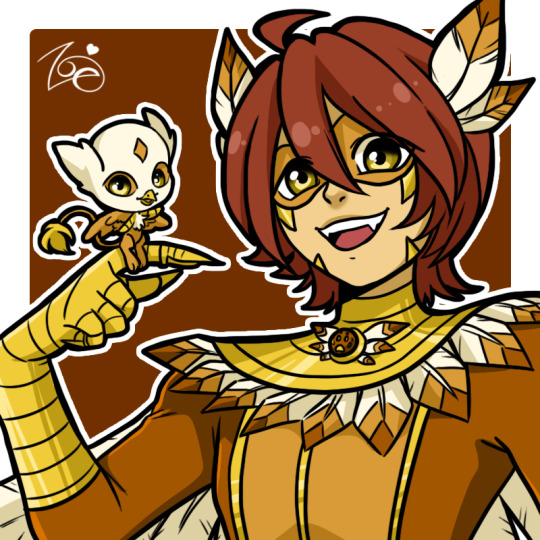


This year I'll show off some OCs~









Hope for a good 2025!
Ko-fi
Zoe with the Bat Miraculous (Original by adventuremaker21)
Ladybug and Shadybug mimicking Ava Max's "Heaven and Hell" album cover
MyVan in their Scarlet Lady Cover outfits
Adrien Redesign
Marinette Redesign
Alya Redesign
Nino Redesign
Felix Redesign
Nathaniel and Carprikid from my Angelic Layer AU
Zoe with the Snake Miraculous
KaZuZu's Griffin Oc (redesigned)
KaZuZu's Oc Midsommer with Marigold and Chat Noir
Monsterdough's Friend's OC Max
Kagami in Cinnamoroll Merch
JuleRose Kwami Swap
Adrienette
Nathalie with the Butterfly Miraculous
Jagged Stone with the Butterfly Miraculous
Ladybee
Feralnette (au by bigfatbreak)
Kagami with the Rabbit Miraculous
Adrien with the Peacock Miraculous
#my art#patreon art#zoe#bat miraculous#ladybug#shadybug#mylene#ivan#myvan#adrien#alya#nino#felix#nathaniel#caprikid#alau art#snake miraculous#kagami#julerose#tiger miraculous#pig miraculous#adrienette#nathalie#butterfly miraculous#jagged stone#ladybee#feralnette#feralnette fanart#bigfatbreak#rabbit miraculous
2K notes
·
View notes
Text
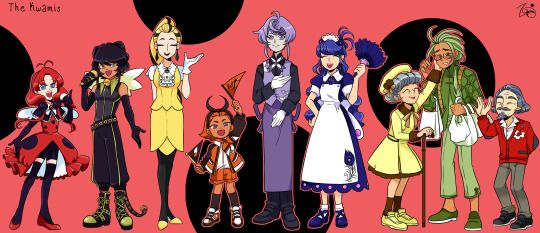
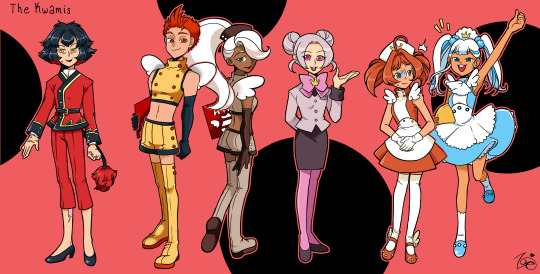
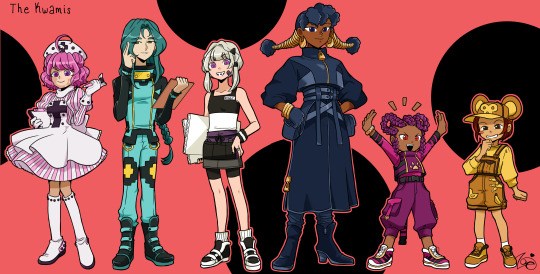
The Kwamis! Some of these came easier than others, but since Angelic Layer has no magic involved, all the kwamis became human~ They won't be very prevalent, they're mostly here to fill in background character roles - shop clerks, MCs Tournament Directors, fans - so they won't have a whole lot of speaking roles (aside from, you know, the MCs who're there to commentate on the fights lol). But I thought I'd give them all a nice nod in the story somewhere.

As expected, Tikki and Plagg are the main MCs. Marinette and Adrien's fights will be going on concurrently so Tikki will be commentating Marinette's fights while Plagg commentates on Adrien's. They'll have the most dialogue of the kwamis, so I do want them to have unique ways of discussing what they're seeing.
Pollen will be working directly for the Bourgeois'. As a VIP with a direct relationship with the international director of Angelic Layer, Chloe has her own private practice layer in her home and Pollen is in charge of it's upkeep and maintenance. She matches Armand the Bulter's levels of competence.
Trixx is a Rena Rouge mega fan. They've been following Alya's blog for as long as they can remember and are mega stoked that Alya moved to their city. When Alya starts to doubt herself, it's Trixx's voice that can be heard cheering her on to not give up.
Nooroo and Duusu are servants in the Agreste Estate. Unknown to Adrien, they are fully aware of his sneaking around to play and the two do what they can to make excuses and deflect Nathalie when Adrien isn't where he's supposed to be. They're rooting him on from the shadows!
Wayzz is the adult son of Marianne and Fu. He brings them to Angelic Layer fights against his will because the two really enjoy them. The two seem to be really invested in Ladybug and Chat Noir's career (and the behind the scenes shenanigans that they secretly spy on).
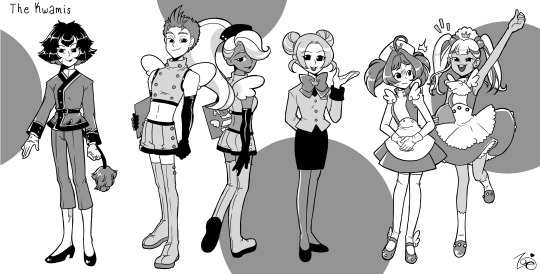
Longg is Kagami's bodyguard. Like Nooroo and Duusu, they are fully aware of what Kagami is doing behind her mother's back and feigns ignorance when Kagami pulls something..."sneaky" to get to a fight secretly.
Here's where we get into some existing jobs from the show:
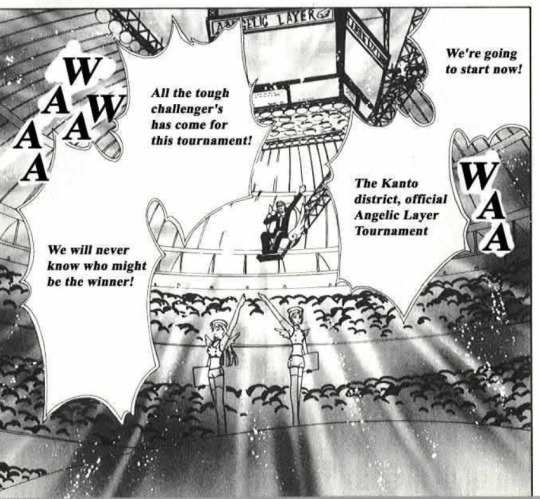

Orikko and Kaalki are the "Layer Hot Girls (and boy)". lol I just thought it was funny that Angelic Layer even has them.
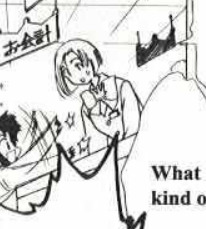

Mullo is the sales clerk at the Princess Piffle store (the store where you can buy your Angel and all the accessories). All of them lol. Mullo and her many many sisters who look just like her.


Barkk and Fluff take similar but still different roles (the uniforms are ALMOST the same but there are some tiny differences). So Barkk is the receptionist at the Practice Ring (literally you pay to reserve a mini-layer to practice on) while Fluff is the waitress/cashier at the cafeteria at the Tournament Center.

(and back to making shit up lol)
Daizzi is a nurse where Rose goes to the hospital and she has segmental localized vitiligo. Rose is particularly close to Daizzi since she helps Rose make her donations to the hospital.
Sass is the backstage directory, aka, the guy who makes things run. He has an earpiece that has the same diamond pattern as his pants on it! The anime does show one person who helps backstage, but I wanted to have a little fun with Sass's look and tie in to him being "in charge" of the kwamis.
Ziggy works at Socqueline's family art supply shop, which is frequented by Angelic Layer players who are on a bit of a budget. They love talking with the customers about their angels, though mostly the design part.
Stompp is Ivan's foster mother and Roarr his foster sister (Stompp's bio-daughter). I actually didn't think of what kind of job this outfit would be good for, but I think she'd make a good security guard - usually working at rock concerts, which she bonds with Ivan over, but she's also been hired for Angelic Layer tournaments. Sometimes sore losers get a little...violent.
Roarr falls in love with Juleka's Angel Purple Tigress immediately thanks to her pre-existing love of tigers in general. She's even bold enough to proclaim her love to Juleka herself!
Xuppu is Ondine's sibling and a fan of King Monkey, though they'll go out of their way to make fun of Kim himself. Secretly, they're very invested in Kim's career and get very upset on his behalf when he loses.
#angelic layer au#alau#alau art#kwamis#tikki#plagg#pollen#trixx#duusu#nooroo#wayzz#marianne#fu#longg#orikko#kaalki#mullo#barkk#fluff#daizzi#sass#ziggy#stompp#roarr#xuppu#alau:kwamis
3K notes
·
View notes
Text

This time I tried Procreate! It’s *almost* there, I just need to fiddle with it so it recognizes Pen Pressure, I’m used to my line art having different weights so this feels one note to me.
3K notes
·
View notes